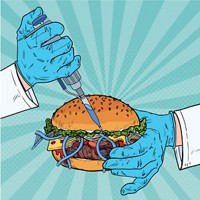Advertisement
Grab your lab coat. Let's get started
Welcome!
Welcome!
Create an account below to get 6 C&EN articles per month, receive newsletters and more - all free.
It seems this is your first time logging in online. Please enter the following information to continue.
As an ACS member you automatically get access to this site. All we need is few more details to create your reading experience.
Not you? Sign in with a different account.
Not you? Sign in with a different account.
ERROR 1
ERROR 1
ERROR 2
ERROR 2
ERROR 2
ERROR 2
ERROR 2
Password and Confirm password must match.
If you have an ACS member number, please enter it here so we can link this account to your membership. (optional)
ERROR 2
ACS values your privacy. By submitting your information, you are gaining access to C&EN and subscribing to our weekly newsletter. We use the information you provide to make your reading experience better, and we will never sell your data to third party members.
Biological Chemistry
Newscripts
Llama Antibodies, Arsenic Sea Monkeys
by Carmen Drahl
May 2, 2011
| A version of this story appeared in
Volume 89, Issue 18

For Els Pardon, a postdoctoral researcher in Brussels, it takes about an hour’s drive through the Belgian countryside to visit one of her most important collaborators. MEET PIPET: grassy-field lover, contributor to biochemical research, and llama. He’s one of a herd of 15, along with companions Petri, Erle, and Meyer.
In January, antibodies from Pipet’s blood helped scientists see something they’d never seen before: the active form of a protein in the important drug target class of G-protein-coupled receptors (GPCRs) (Nature, DOI: 10.1038/nature09648). Proteins in this class are implicated in diseases as diverse as schizophrenia and diabetes. But until January, researchers had determined structures of only inactive receptors, which aren’t always relevant to drugmakers.
Using llama antibodies for research is not a new idea, explains Pardon, who works at the Free University of Brussels. It was there more than 20 years ago that an undergraduate accidentally discovered that llamas and similar animals produce antibodies with a structure simpler than those of humans or mice. Fragments of these minimalist antibodies turned out to be good at latching onto clefts in proteins where a full-size antibody might not fit. Scientists use them to block enzymes’ activities or to stabilize floppy proteins to make them more amenable to forming crystals for structural studies.
Pardon’s adviser, Jan Steyaert, is cofounder of Ablynx, a biotech company that is developing the antibody fragments, or nanobodies, as potential drugs. Steyaert’s team got into GPCR structure determination in 2008, when it teamed with Brian K. Kobilka of Stanford University. With the help of a local veterinarian, the Belgian group vaccinated Pipet with tiny amounts of a GPCR Kobilka provided. The researchers then mass-produced the antibodies Pipet made against the GPCR.
When asked whether Pipet’s genetics had anything to do with his being able to generate useful antibodies, Steyaert says that’s not a factor. “Another llama would have generated other antibodies, but they would have served the same purpose,” he says. In other words, no plans currently exist to put Pipet out to stud.
Want a pet with some scientific flair but don’t have room for a llama? Then the nerd-friendly online gift emporium ThinkGeek.com has just the thing for you: sea monkeys that incorporate arsenic into their DNA.
Just kidding. The arsenic-based sea monkeys are not available to purchase. They were an APRIL FOOLS’ DAY addition to the ThinkGeek.com catalog, a yearly tradition in which the company places fake, funny products on its website.

The faux aquatic pets were a gentle jab at controversial research published last December that claimed to have found a microbe in California’s Mono Lake that could replace the phosphorus in its DNA with arsenic. The research generated front-page headlines but was quickly criticized by other scientists, including chemists (C&EN, Dec. 13, 2010, page 7).
Felisa Wolfe-Simon, first author of the research, says she heard about the sea monkeys in the wee hours of April 1, while chatting online with a friend. “At first I thought, ‘Oh God,’ ” she says. But she was impressed by how well the ThinkGeek.com folks represented the work, so she called to thank them for the shout-out.
What’s neat about this gag, as well as the recent jokes about arsenic life-forms in the comic strips “Dilbert” and “xkcd,” is that the authors think their readers also know about the basic life science, understand it to some degree, and will get the joke, Wolfe-Simon says. “That’s pretty cool,” she adds, “for both science and society.”
Carmen Drahl wrote this week’s column. Please send comments and suggestions to newscripts@acs.org.




Join the conversation
Contact the reporter
Submit a Letter to the Editor for publication
Engage with us on Twitter